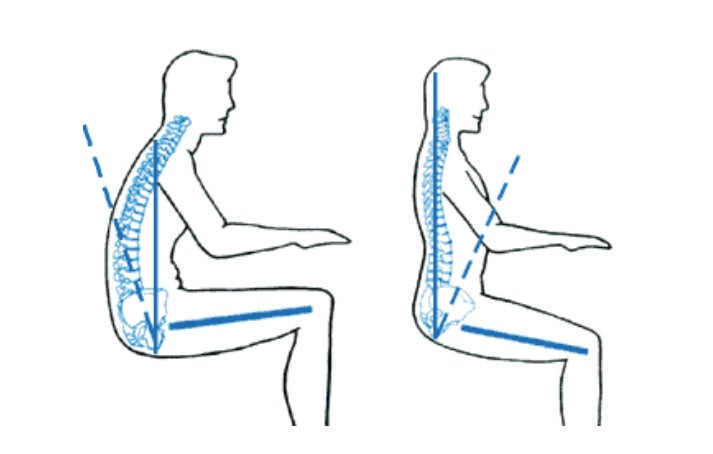New perk! Get after it with local recommendations just for you. Discover nearby events, routes out your door, and hidden gems when you sign up for the Local Running Drop.
Balancing sitting at a desk all day with the rigors of endurance training has always been something to think about. But with so many of us working from home these days, we’re now doing it at our dining room tables or kitchen counters, only making matters worse. Cuddling up with our laptops in a corner of the couch might provide momentary comfort, but remember, just as our bodies respond to positive stressors like an incredible training session, they adapt just as quickly to negative ones—like not paying attention to your work-from-home posture.
We spend a ton of time honing our craft for all things swim, bike, run, strength, recovery, nutrition, etc. Yet we don’t give a second thought to the impact of spending upwards of 10 hours a day sitting in a less-than-ideal posture, which is potentially counterproductive to all that hard work. From circulation to hormone production, poor posture impacts so much more than how stiff we might feel from one day to the next.
So how do we rewind our “work at home” posture, keeping our six-pack and upper back engaged even while seated on a long day of back-to-back videocalls?
Follow these three simple steps to reinforce posturally solid, incredibly transferable habits from your laptop directly to your next training session.
RELATED: The Long-Term Effects of “Work-From-Home Posture” Are Killing Your Training
1. Turn Sitting into Planking
Sitting with good posture (on your “sit bones,” as my mother would say) is actually just a strict plank. Unfortunately, many of us are incredibly mobile in the L5-sacral area from years of slouched sitting. That slow rotation backward of your pelvis (posterior tilt) becomes very easy if the muscles between your hip bones (anterior core) are not engaged.
The true danger arises when we sprint out the door for a midday bike or run with a pelvis that is very comfortable in the posterior tilt position. Our glutes are turned off and our quads and lower backs begin to do work that anatomically, our buns were designed for—if properly engaged.

Find your “sit bones” and float your ribs in a neutral, unflared position directly over the points at the front of your hips. Engage your shoulder blades to drive your upper traps downward toward the back of your hips—releasing stress/engagement from your neck. Now, breathe into your upper back while maintaining tension between your hip bones.
2. Reset Your Upper Back
It seems almost too simple to be effective, but a handful of seated, reverse shoulder rolls can do wonders to reestablish length in the chest and shoulders, in addition to strengthening the mid- and upper-back musculature. Sit tall and shrug your shoulders up and back, retracting your shoulder blades as you go. Pull in a deep breath all the way into the back of your shoulder blades before returning to your newly established neutral position. Rinse and repeat several times during the day especially pre-workout.
3. Give Your Shoulders a Little TLC
Many of us start our days with hundreds upon thousands of internally rotated strokes in the pool. From there, we sit at our laptops with—you guessed it—internally rotated shoulders. But the postural reset for this is an easy build off the first two steps above.
After you’ve dropped your torso into an active, seated position, place your hands facing one another into your lap with elbows at approximately 90 degrees. Holding your elbows at your hip bones, gradually rotate your shoulders externally—your shoulder blades should move closer together and your palms should gently start to face forward. Hold when you find a gentle stretch and then slowly release. Utilizing a Theraband to create active resistance in your hands may also be helpful for more advanced athletes.
As endurance athletes, we always need to be sensitive to the concept of “doing more” or “too much.” But being active at your computer doesn’t take a significant amount of effort to massively reinforce the great strength and posture work you are likely already doing in your strength training. It does, however, take thought, intentionality, and consistency.
Reset and pay attention to your work-from-home posture frequently, and I guarantee you’ll not only feel more alert during your workday but also far more connected in your next training session.
Kate Ligler has specialized in endurance training in both functional strength and conditioning, as well as technical program creation for cyclists, runners, triathletes, and multi-sport endurance athletes for well over a decade. She is a NASM cPT in addition to a NASM CES (corrective) and PES (performance) specialist.
